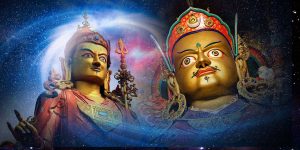Lamrim: the fast “mapped” path to Buddhist realizations: “It expounds the entire path” — Dalai Lama
In the quest for Enlightenment, the “swift” lightning path is Vajrayana. The key reason it is the fast path is its step-by-step structure — with teachings organized carefully into proven systems. One of these is Lamrim — the lamp of the Path.
H.H. the Dalai Lama explains why the step-by-step approach is also the “fast” path:
“What distinguishes it … is its scope and clarity. It expounds the entire path from the way one should rely on a spiritual teacher, which is the very root, right up to the attainment of buddhahood, which is the final fruit. The various stages of the path are presented so clearly and systematically that they can be easily understood and are inspiring to put into practice.” [1]
Buddhist Teachers are universal in their enthusiasm for Lamrim. Venerable Zasep Rinpoche, who frequently teaches Lamrim — and is teaching a Zoom retreat in Lamrim November 29 – December 13 2020 (details below) — is always enthusiastic when describing Lamrim:
“Lam Rim is essence of 84,000.00 Dharmas! It is the gradual path to Enlightenment Buddhahood! Lam Rim was introduced by Atisha Dipamkara, the great enlightened Buddhist master to Tibet. The lineage of Gelug Lam Rim teachings are so helpful and powerful for our everyday life — how to overcome our suffering and how to generate care, love and compassion for others; and how to live in the world with peace and dignity.”

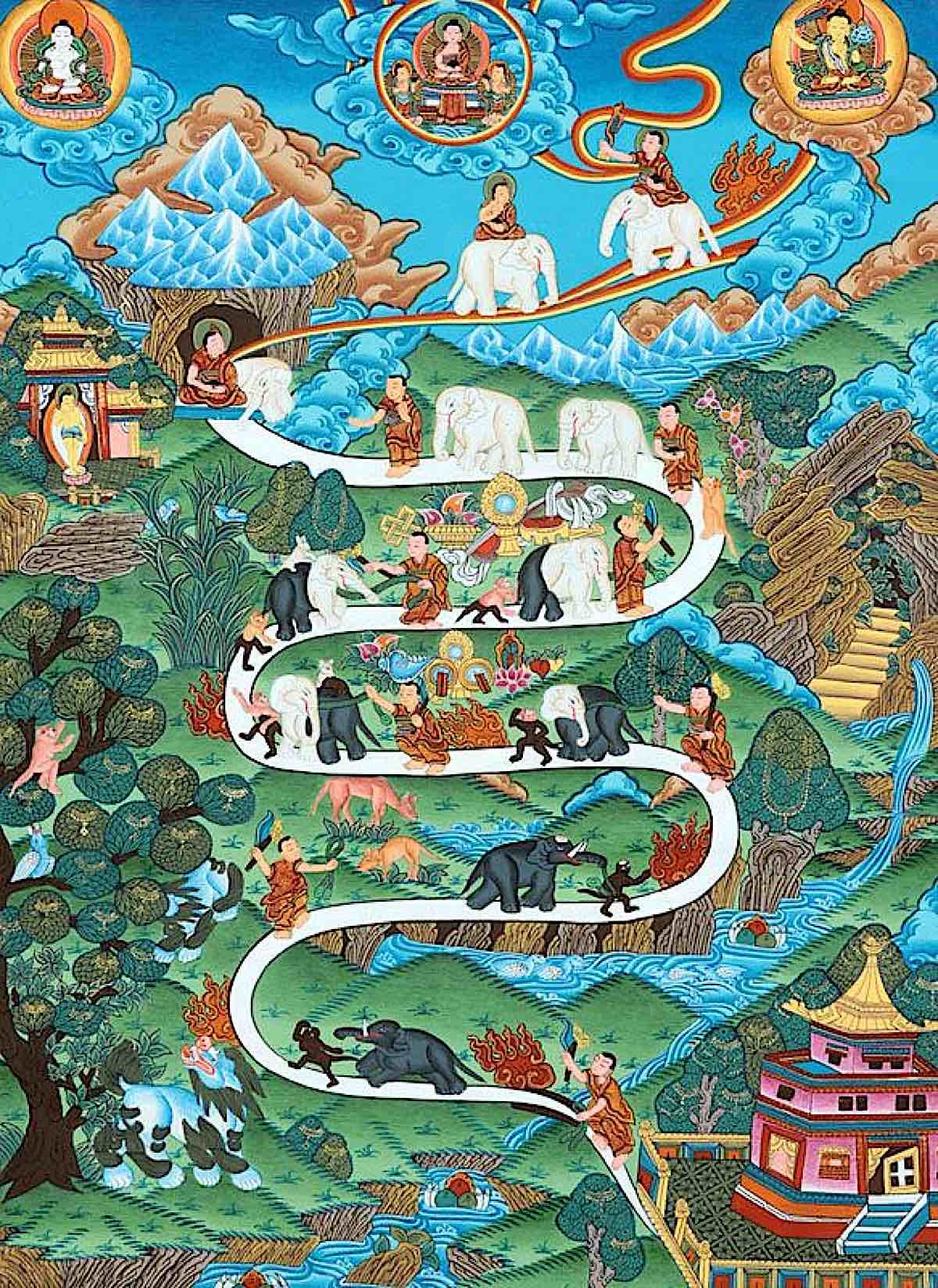
The Fast Path?
It seems counter-intuitive, to some, that the great lineage teachers, from Atisha through to Lama Tsongkhapa, through to modern-day teachers recommend Lamrim as our “step-by-step” path to realizations. In the classical metaphor of the Tortoise and the Hare, Lamrim would be the Tortoise: steadily progressing flawless, unstoppable on the path, while the Hare — in our metaphor, the practitioner who attempts the shortcuts — dashes here and there, trying Samatha, trying Vipassana, trying this, trying that, often without completing anything.
The great Lama Tsongkhapa’s commentary on Lamrim is three very thick volumes — giving you an idea of the vast, comprehensive scope. Yet, as you read through these 1200 or so pages (English translation version), you are taken, step-by-step, deeper, and deeper along the path. The gradual, step-by-step approach is, in fact, the fast path. Like the tortoise — because we make no mistaken steps, just steadily proceed along the path— we are always one step closer to our goal.

How fast is the steady, step-by-step path? Lama Zopa Rinpoche, the spiritual guide of FPMT, recently gave new advice on how to study Buddhism, suggesting that students follow a Lamrim outline and meditate on each subject for two weeks or one month until all subjects have been completed. Rinpoche advised,
“The amount of time for meditation is up to the individual, but the general advice is to finish the lamrim in one year,” Rinpoche said. “To meditate like this each year, wow, wow, wow! That would be great.”[2]
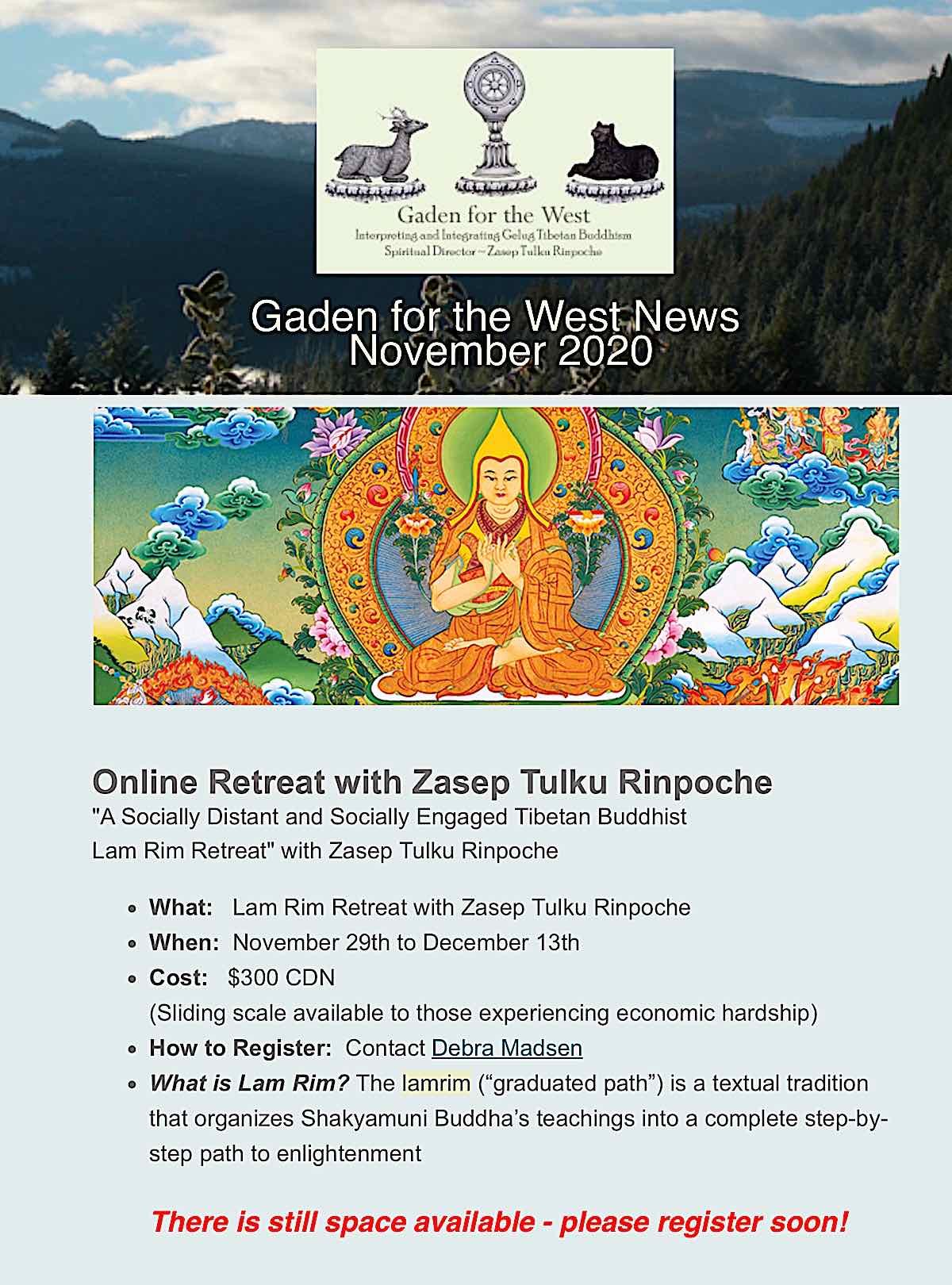
Avoid going “off-road” with Dharma practice
Skipping a step can lead to long delays — metaphorically, like going off-road in a car to take a short cut, only to be mired in the mud. Lamrim is our safe and proven map — and we are fortunate that so many great, modern teachers have offered detailed commentaries and teachings — the Dalai Lama, Geshe Lhundub Sopa, Lama Zopa, and many others. Our map is readily available, and well-proven by countless great master practitioners. There is no need to go off-road in our practice.
One translation of Lamrim is “lamp of the path.” It is, in fact, a complete, progressive path, missing nothing, containing every teaching proven — by a lineage of successful practitioners and teachers — to lead to Enlightenment.

It only seems “counter-intuitive” to the impatient among us Many of us, who start with Lamrim practices, jump quickly into powerful Kriya and Higher Yoga Practices — after all, deity visualizations are so enticing, so alluring, so powerful — only, to find our teachers recommending we go back to Lamrim “at least for a reboot or refresher.”
Even the great teachers practice Lamrim for decades
Zasep Tulku Rinpoche, who comes from a long lineage of Gelug teachers, explains the importance of Lamrim — a comment notable for his personal enthusiasm for the practice in his own life:
“There are three main paths: Renunciation, Bodhicitta and Shunyata. I have been practicing Lamrim since 1967 — for the last 53 years. I love Lamrim! Lamrim makes me a happy and healthy Dharma practitioner. Lamrim practice generates the potential for realizations. I will practice Lam Rim rest of my life, and, hopefully, my next life! I wish that all beings have the opportunity to do the same.”

Logic and mapped foundational practices
Lamrim is, arguably, is even more important today, than it was in ancient times. Our modern, distracted lifestyle is why Vajrayana Buddhism is so enticing, with its systemized approach — where everything is logical and mapped out.
It is for this reason, that the graduated path to Enlightenment — such as Lamrim — has always been the choice of teachers for their students. Even, for those of us with those fifteen empowerments, it is often best to “return to the foundation practices” as often as possible. It is through those practices that we can purify, and create the merit to make our practices really valuable.

“Even after twenty years, if you still feel like a ‘dharma baby’ still just starting out — and our dharma practice is so-so — why is this happening? In the ‘Wheel of Sharp Weapons’ it explained that it is partially our own laziness and procrastination… or your own cynical mind is blocking your progress… The remedy is just to practice diligently…”
— Venerable Zasep Rinpoche in a live-streamed Lo Jong teaching Nov 1, 2020 on YouTube>>
- NOTE: Zasep Rinpoche will commence an online intense Zoom-facilitated Lamrim retreat. The only pre-requisites are an interest in the Dharma. Details below. Website information page>>
H.H. the Dalai Lama explains the importance of Lama Tsongkhapa’s Lamrim Chenmo, the Great Treatise:
“Of the many works of the Tibetan master Tsong-kha-pa, none compares in terms of popularity and breadth of influence with his Great Treatise, which has been treasured by practitioners and scholars alike for centuries.”
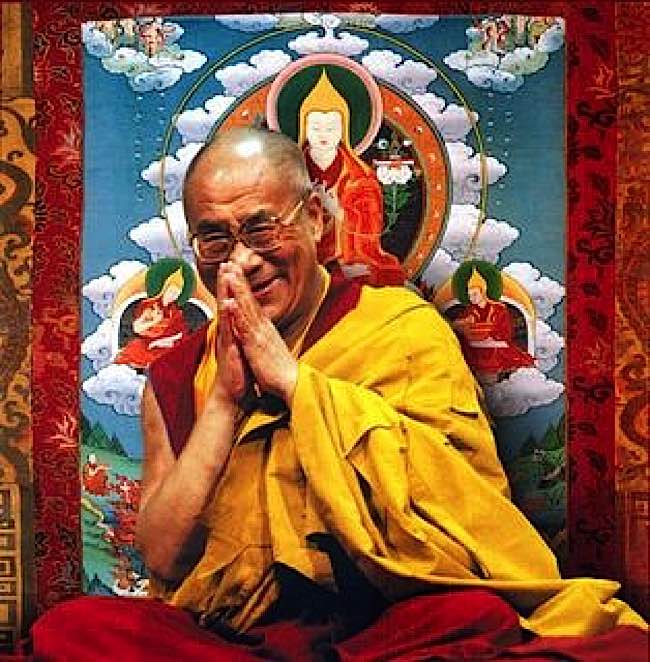
Outlining the “steps” of Lamrim
The steps are clear in Lamrim. Both teacher and student are guided progressively, and in order, through various stages. The key stages are — in order — and each of these has many sub-topics (See the chapters of Lama Tsongkhapa’s Lamrim Chenmo below):
- Guru Devotion
- The Opportunity of Fortunate Rebirth
- Meditation on Death
- Suffering in the cycle of Samsara
- Taking Refuge in the Three Jewels
- Karma
- Suffering of Beings
- Three Sufferings
- Samsara and Nirvana
- Generating Bodhichitta
- The Six Perfections
- Four Means of Gathering
- Calm Abiding
- Special Insight
- Tantra — how to enter the adamantine vehicle.

Lama Tsongkhapa’s peerless commentary on Lamrim References and books
Three Volumes English translation of Lama Tsongkhapa’s Lamrim Chenmo
We are fortunate that every word of the Lamrim Chenmo has been meticulously translated by the Lamrim Translation Committee under the stewardship of great teachers. It was desribed, appropriately, by Professor Robert Thurman, as “One of the greatest religious or secular works in the library of our human heritage.”
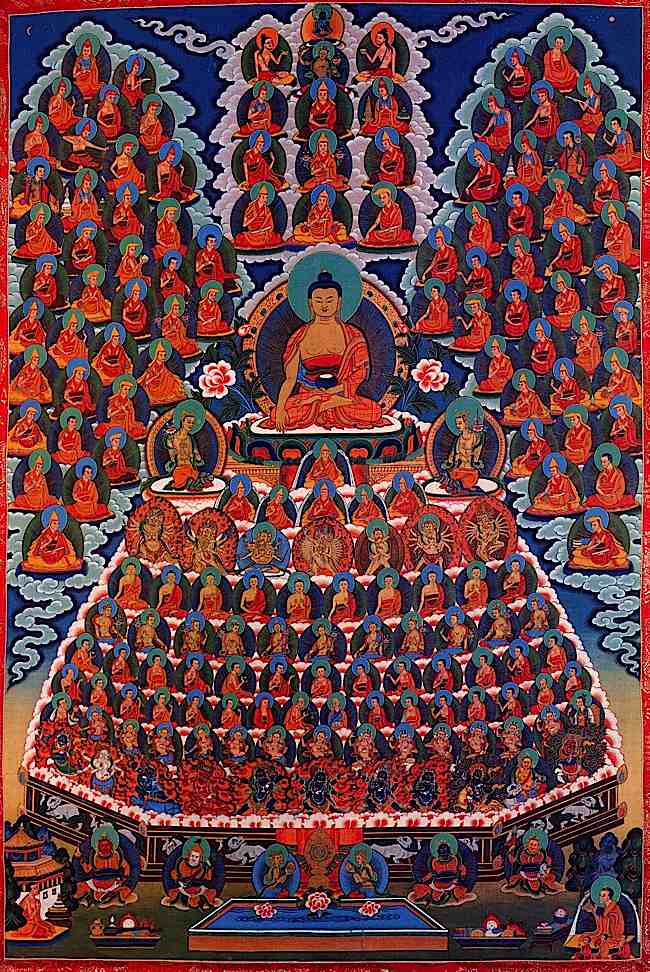
Contents of Lama Tsongkhapa’s Lamrim Chenmo
The contents of the three-volume translation of Lama Tsongkhapa’s Lamrim Chenmo gives outlines the step-by-step path:
- Atisha
- The Greatness of the Teaching
- How to Listen to and Explain the Teachings
- Relying on the Teacher
- The Meditation Session
- Refuting Misconceptions About Meditation
- A Human Life of Leisure and Opportunity
- The Three Types of Persons
- Mindfulness of Death
- Reflecting on Your Future Life
- Going for Refuge to the Three Jewels
- The Precepts of Refuge
- The General Characteristics of Karma
- The Varieties of Karma
- Cultivating Ethical Behavior
- The Attitude of a Person of Small Capacity
- The Eight Types of Suffering
- The Six Types of Suffering
- Further Meditations on Suffering
- The Origin of Suffering
- The Twelve Factors of Dependent-Arising
- The Attitude of a Person of Medium Capacity
- Ascertaining the Nature of the Path Leading to Liberation
- The Nature of the Three Trainings
VOLUME 2
- THE STAGES OF THE PATH FOR PERSONS OF GREAT CAPACITY
- COMPASSION, THE ENTRANCE TO THE MAHĀYĀNA
- THE SEVEN CAUSE-AND-EFFECT PERSONAL INSTRUCTIONS
- EXCHANGING SELF AND OTHER
- THE RITUAL FOR ADOPTING THE SPIRIT OF ENLIGHTENMENT
- MAINTAINING THE SPIRIT OF ENLIGHTENMENT
- AN INTRODUCTION TO THE SIX PERFECTIONS
- TRAINING IN THE MAHĀYĀNA: PRECEPTS AND PERFECTIONS
- THE PERFECTION OF GENEROSITY
- HOW TO GIVE
- THE PERFECTION OF ETHICAL DISCIPLINE
- THE PERFECTION OF PATIENCE
- THE PERFECTION OF JOYOUS PERSEVERANCE
- THE PERFECTIONS OF MEDITATIVE STABILIZATION AND WISDOM
- HELPING OTHERS TO MATURE: THE FOUR WAYS TO GATHER DISCIPLES
VOLUME 3
Part One Meditative Serenity
- Serenity and Insight
- Preparing for Meditative Serenity
- Focusing Your Mind
- Dealing with Laxity and Excitement
- Attaining Serenity
- Serenity as Part of the Path
Part Two Insight
- Why Insight Is Needed
- Relying on Definitive Sources
- The Stages of Entry into Reality
- Misidentifying the Object to Be Negated
- Dependent-Arising and Emptiness
- Rational Analysis
- Valid Establishment
- Conventional Existence
- Production Is Not Refuted
- Not Negating Enough
- The Actual Object to Be Negated
- Misinterpretations of the Svatantrika/Prasafigika Distinction
- Refuting Misinterpretations of the Svatantrika/ Prasarigika Distinction
- Our Interpretation of the Svatantrika/Prasarigika Distinction
- Our Critique of Svatantrika Does Not Hurt Our Own Arguments
- Analyzing a Chariot
- The Person Lacks Intrinsic Nature
- Objects Lack Intrinsic Nature
- Insight Requires Analysis
- Uniting Insight and Serenity
- Summary and Conclusion
Source: Tsong-Kha-Pa. The Great Treatise On The Stages Of The Path To Enlightenment Vol 1, 2, 3
The Great Treatise on the Stages of the Path to Enlightenment (Volume 1) by Lama Tsongkahpa
Description: The Great Treatise on the Stages of the Path to Enlightenment (Tib. Lam rim chen mo) is one of the brightest jewels in the world’s treasury of sacred literature. The author, Tsong-kha-pa, completed it in 1402, and it soon became one of the most renowned works of spiritual practice and philosophy in the world of Tibetan Buddhism. Because it condenses all the exoteric sūtra scriptures into a meditation manual that is easy to understand, scholars and practitioners rely on its authoritative presentation as a gateway that leads to a full understanding of the Buddha’s teachings.
Tsong-kha-pa took great pains to base his insights on classical Indian Buddhist literature, illustrating his points with classical citations as well as with sayings of the masters of the earlier Kadampa tradition. In this way the text demonstrates clearly how Tibetan Buddhism carefully preserved and developed the Indian Buddhist traditions.
Details
- Publisher: Snow Lion
- 12/09/2014
- Pages: 440
- Size: 6 x 9.25
- ISBN: 9781559394420
- Available hardcover or ebook on Shambala site>>
- Available on the Penguin publisher website>>
The Great Treatise on the Stages of the Path to Enlightenment (Volume 2) by Lama Tsongkhapa
Description
This second of three volumes covers the deeds of the bodhisattvas, as well as how to train in the six perfections.
Details
- Publisher: Snow Lion
- 12/09/2014
- Pages: 304
- Size: 6 x 9.25
- ISBN: 9781559394437
The Great Treatise on the Stages of the Path to Enlightenment (Volume 3) by Lama Tsongkhapa
Description
This third and final volume contains a presentation of the two most important topics in the work: meditative serenity (śamatha) and supramundane insight into the nature of reality (vipaśyanā).
Details
- Snow Lion
- 12/09/2014
- Pages: 448
- Size: 6 x 9.25
- ISBN: 9781559394444
One of the best commentaries on Lama Tsongkhapa’s Lamrim Chenmo is the extensive five-volume set by Geshe Lhundub Sopa weighing in at over 2600 pages:
- Tsongkhapa’s Lamrim Chenmo Volume 1: The Foundation Practices 608 Pages>>
- Tsongkhapa’s Lamrim Chenmo Volume 2: Karma 512 Pages>>
- Tsongkhapa’s Lamrim Chenmo Volume 3: The Way of the Bodhisattva 624 Pages>>
- Tsongkhapa’s Lamrim Chenmo Volume 4: Samatha 201 Pages>>
- Tsongkhapa’s Lamrim Chenmo Volume 5: Insight 728 Pages>>
Liberation in the Palm of Your Hand
Liberation in the Palm of Your Hand, by Pabongka Rinpoche, and edited by H.H. Trijang Rinpoche, is probably the “easiest” step-by-step guide to Lamrim in the Gelug tradition. The contents of the nearly 900 page book came from a series of teachings by the learned Pabongkha Rinpoche. From the book bio:
“Pabongka Rinpoche was one the twentieth century’s most charismatic and revered Tibetan lamas, and in Liberation in the Palm of Your Hand we can see why. In this famous twenty-four-day teaching on the lamrim, or stages of the path, Pabongka Rinpoche weaves together lively stories and quotations with frank observations and practical advice to move readers step by step along the journey to buddhahood. When his student Trijang Rinpoche first edited and published these teachings in Tibetan, an instant classic was born. The flavor and immediacy of the original Tibetan are preserved in Michael Richards’ fluid and lively translation, which is now substantially revised in this new edition.”

- Introduction
- the greatness of the author of the lamrim, to establish the authenticity of the teaching
- the greatness of the lamrim itself, to gain respect for it
- the way the instructions are to be received and given
- the way the students are to be guided through the subjects. This fourth subject has two divisions:
-
- the way to rely on a spiritual guide
- the way to train your mind on the basis of the correct way to rely on the spiritual guide. This last heading contains the rest of the instructions under the headings:
-
- the way to encourage yourself to take the essence of this precious human rebirth
- the way to take the essence of this precious human rebirth (that is: training your mind in the paths of the three scopes included within the lamrim)
- The path shared with persons who have the modest scope motivation
Striving for a rebirth in the upper realms:
- the reality that this life will end and that you will die
- the suffering in a rebirth in the lower realms (a rebirth as hell being, hungry ghost or animal, which you want to avoid)
- (so you) take refuge in the three Jewels: Buddha, Dharma and Sangha
- (and adjust your behavior of body, speech and mind according to the) law of cause and effect/ karma which will lead you to a favorable rebirth within cyclic existence in the human-, demigod-, or god realm.
- The path shared with persons who have the medium scope motivation
Striving for liberation of cyclic existence. The training in the medium scope path will lead to the development of the wish to be liberated from all un-free rebirths in cyclic existence through the power of afflictive emotions and karma. It consists of:
- The Four Noble Truths:
-
- The truth of suffering (in cyclic existence in general, including the favorable rebirths)
- The truth of the causes of suffering (the afflictive emotions, especially ignorance)
- The truth of cessation (there is a state that is free of suffering and its origins)
- The truth of paths (the way to attain this state free of suffering and its causes by practicing ethics, concentration and wisdom)
- Another presentation of the middle scope subjects is the presentation of the 12 links of dependent arising
- The path for persons who have the high scope motivation
Striving for complete buddhahood:
- Developing mind of enlightenment (bodhicitta), the wish to become a buddha for the welfare of all sentient beings:
-
- the advantages of the mind of enlightenment;
- the way to develop the mind of enlightenment
- the 7-point instruction in seeing all sentient beings as your mothers (from previous lives and contemplating their kindness towards you)
- the instruction on how to exchange your self-interest for others’ interest (by looking at the drawbacks of self-cherishing and the advantages of cherishing others)
- the way to train your mind after developing the mind of enlightenment, by training the six perfections:
-
- training in the perfection of generosity
- training in the perfection of ethics
- training in the perfection of patience
- training in the perfection of joyful effort
- training in the perfection of concentration
-
- training in the perfection of wisdom
- Publisher: Wisdom Publications (November 3, 2006)
- Length: 896 pages
- ISBN13: 9780861715008
- On Amazon>>
Lamrim Texts
The following references compiled from the very complete FPMT reference page:
- Liberation in the Palm of Your Hand by Pabongka Rinpoche
- Lamrim Chenmo: The Great Treatise on the Stages of the Path to Enlightenment, Volumes 1, 2, 3 by Je Tsongkhapa
- Approaching the Buddhist Path; The Foundation of Buddhist Practice; Samsara, Nirvana, and Buddha Nature; Following in the Buddha’s Footsteps by His Holiness the Dalai Lama and Ven. Thubten Chodron
- Steps on the Path to Enlightenment: A Commentary on the Lamrim Chenmo, Volumes 1, 2, 3, 4, 5 by Geshe Lhundub Sopa
- Practicing the Path by Yangsi Rinpoche
Vietnamese
- Lamrim Chenmo Volume 1
- Lamrim Chenmo Volume 2
- Lamrim Chenmo Volume 3
- Middle Length Lamrim by Je Tsongkhapa
Middle Length Lamrim Texts
- From Here to Enlightenment by Holiness the Dalai Lama
- The Path to Enlightenment by His Holiness the Dalai Lama
- Illuminating the Path to Enlightenment by His Holiness the Dalai Lama
- The Essential Nectar by Geshe Rabten
- Lamp for the Path to Enlightenment by Atisha Dipamkara
- Lamrim Outlines: Extended Beginners’ Meditation Guide by Ven. Karin Valham
Concise Lamrim Texts
- Three Principal Aspects of the Path by Je Tsongkhapa
- Schedule for Three-Day Lamrim Retreat by Lama Zopa Rinpoche
- A Glance Meditation on All the Important Points of the Lamrim by Losang Jinpa
- The Foundation of All Good Qualities by Je Tsongkhapa
- A Hymn of Experience by Je Tsongkhapa
- Calling the Guru from Afar
- Practicing Guru Devotion with the Nine Attitudes
- The Graduated Path to Liberation by Geshe Rabten Rinpoche
Details on the online Zoom retreat on Lamrim
From the website: “Gaden for the West is pleased to announce a two-week Lam Rim Retreat
with Zasep Tulku Rinpoche (November 29th – December 13th) on Zoom.
The cost of the retreat is $300 CDN and a sliding scale is available to those experiencing economic hardship.
What is Lamrim?
The lamrim (“graduated path”) is a textual tradition that organizes Shakyamuni Buddha’s teachings into a complete step-by-step path to enlightenment.
Contact Debra Madsen to register.”
NOTES
[1] Review for The Great Treatise on the Stages of the Path to Enlightenment.
More articles by this author
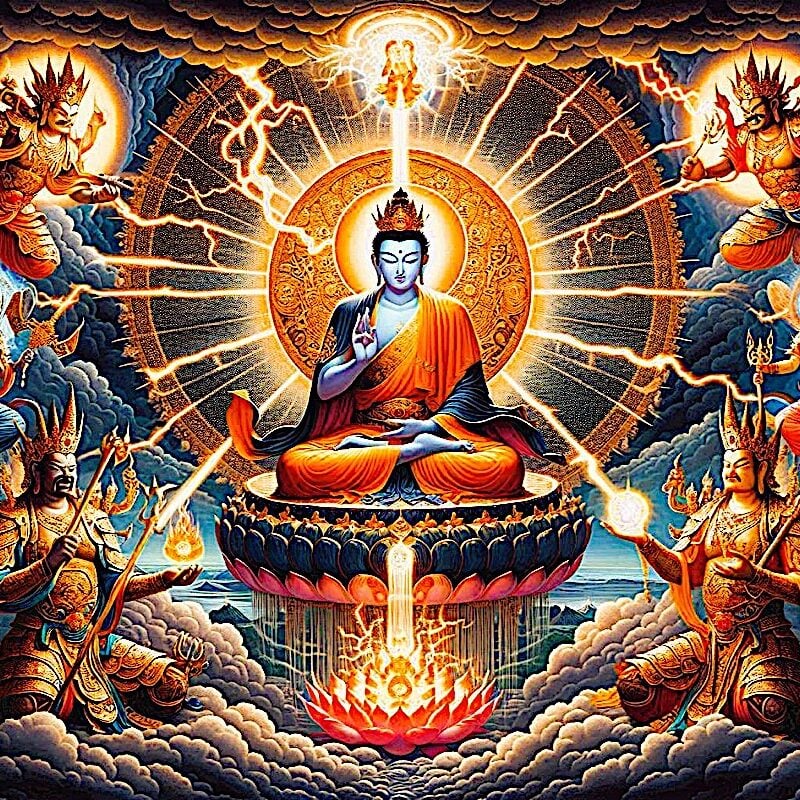
Protection from all Harm, Natural Disaster, Weather, Spirits, Evil, Ghosts, Demons, Obstacles: Golden Light Sutra: Chapter 14

Guru Rinpoche is ready to answer and grant wishes: “Repeat this prayer continuously” for the granting of wishes
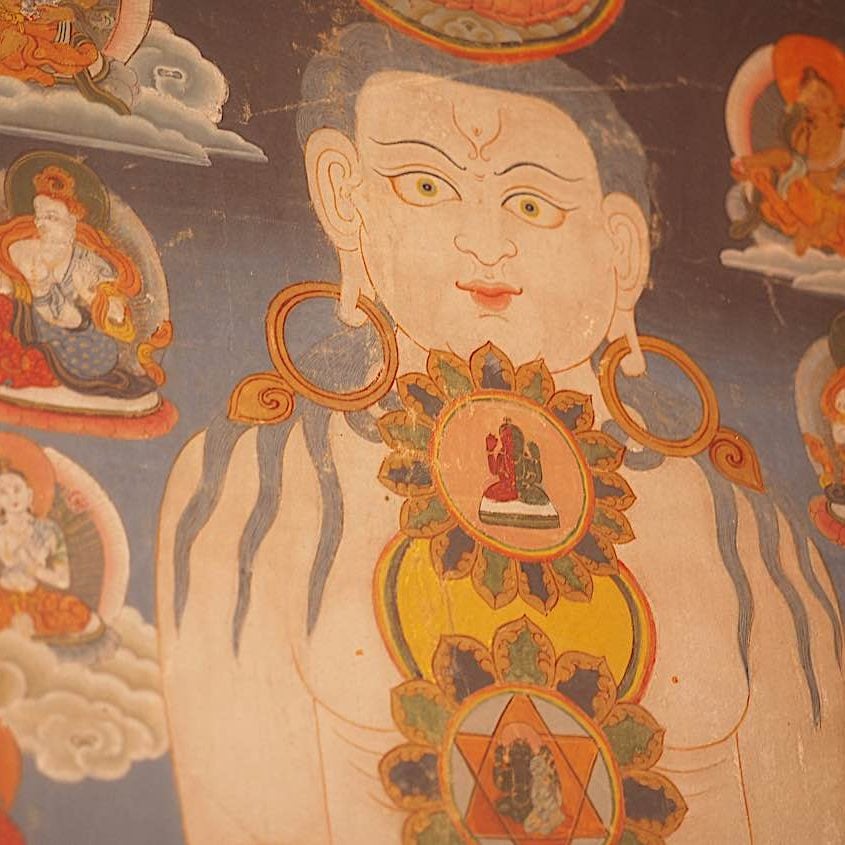
Buddhist body mandala practice in Vajrayana Buddhism — and riding the winds of the inner body “The prana goes where the mind goes.””
Search
Latest Features
Please support the "Spread the Dharma" mission as one of our heroic Dharma Supporting Members, or with a one-time donation.
Please Help Support the “Spread the Dharma” Mission!

Be a part of the noble mission as a supporting member or a patron, or a volunteer contributor of content.
The power of Dharma to help sentient beings, in part, lies in ensuring access to Buddha’s precious Dharma — the mission of Buddha Weekly. We can’t do it without you!
A non-profit association since 2007, Buddha Weekly published many feature articles, videos, and, podcasts. Please consider supporting the mission to preserve and “Spread the Dharma." Your support as either a patron or a supporting member helps defray the high costs of producing quality Dharma content. Thank you! Learn more here, or become one of our super karma heroes on Patreon.
Lee Kane
Author | Buddha Weekly
Lee Kane is the editor of Buddha Weekly, since 2007. His main focuses as a writer are mindfulness techniques, meditation, Dharma and Sutra commentaries, Buddhist practices, international perspectives and traditions, Vajrayana, Mahayana, Zen. He also covers various events.
Lee also contributes as a writer to various other online magazines and blogs.






